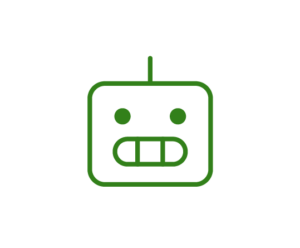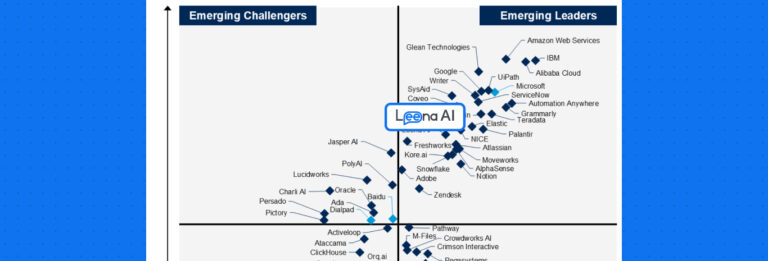Like it or not, the competition among organizations to find and recruit the best talent has never been fiercer. Tangible benefits and salary alone are no longer enough to build a winning employer brand and employee experience.
Organizations must prioritize HR digital transformation to design seamless employee experience journeys if they want to cut above the rest. While multiple factors, such as technology, culture, digital strategy, et al. enable HR transformation, integrating them into critical touchpoints of the employee lifecycle from hire to retirement becomes the essential focus.
Leena AI recently published a report on 2022- State of Digital Maturity of HR Functions in the US, to elucidate the importance of HR digital transformation, how different industries perceive it, where the companies stand in their digital transformation journey, and much more.
This blog outlines some of the exciting facts captured in this report while briefly touching on the significance of HR digital transformation for incredible employee experiences.
What is HR digital transformation?
HR digital transformation is a process where organizations adopt digital human resources tools, practices, and strategies to enhance employee experience and optimize operational performance using data-driven, automated processes.
Although every organization has a different modus operandi to carry out HR digital transformation, there are two steps broadly: modification of HR operations using technology; and simultaneous revolution of the workforce and how things get done in the workplace.
The outcome of a well-executed transformation is always three-fold:
- Automation of time-consuming processes
- Maximization of employee experience
- More freed-up time for high-level HR strategizing
Benefits of HR Digital Transformation
Digitally transforming the HR department has a significantly higher impact than simply bringing efficiencies. In fact, all the stakeholders in the organization – from employees to managers, C-suite, and the HR department reap benefits from it.
Here are some of the benefits that we see across our client base:
Increased talent retention
One of the primary reasons employees leave an organization is a lack of growth opportunities. Employees want growth opportunities within the organization, and when the organization shows their care about employees’ careers, they are likely to stay longer – thereby retaining talent and reducing recruitment costs simultaneously.
Improved decision-making with accurate data
The pandemic has taught us the importance of making decisions based on data instead of instincts. The analytical capabilities of technology give HR all the information they need to make informed decisions to increase employees’ productivity, efficiency, and effectiveness.
Increased employee satisfaction
Countless studies show that happy employees are more productive than unhappy ones. When organizations optimize HR processes and keep employees in the loop, they feel valued and get a sense of achievement and purpose. This level of transparency makes employees happy and focused on their work. As a result, their productivity and satisfaction levels improve significantly.
Reduced HR costs
Organizations that spend on digitizing their HR processes make huge savings on time and resources. The streamlined processes help HRs allocate their time to high-value business tasks.
Automated manual processes
Automating HR processes leaves little room for error. Rather, it ensures better employee engagement, management, and compliance. HRs also find it easier to focus on strategic initiatives that bring the most value to the business.
Consolidated HR systems
Consolidated HR systems liberate HRs from managing multiple tools and applications for maintaining employee records and streamlining business processes. HRs can create a single source of truth to help employees leverage it for their purpose.
HR digital transformation statistics
Our recently launched report, 2022- State of Digital Maturity of HR Functions in the US, has unraveled the digital maturity of different industries and their HR processes.
Here is a sneak peek into the exciting data we have found:
Industry-wise:
- Employee experience is one business dimension that requires some serious attention from the HR department
- Technology as a business dimension is a key factor dragging mid-size (5,000-10,000 employees) organizations from becoming digitally mature
- HR departments of medium-size organizations are leading the digital maturity game on the organization & culture front
- The communications & travel and tourism industries appear to be the least inclined towards technology, which drags down their overall digital maturity
- The retail industry with an overall score of 4 is LIVING through digital transformation
HR processes-wise:
- The talent acquisition process appears to be the most digitally mature for the media and entertainment industry and the least for the BFSI industry
- Digitally mature employee engagement is a WINNING trait in the retail sector
- Manufacturing appears to be more digitally advanced because of its advanced employee experience and agility levers in its HR service delivery process
- The BFSI industry is still in the stage of implementing digital transformation initiatives for their employee onboarding processes
To deep-dive into more valuable insights
download the reportNote: Assess your digital maturity index for FREE to see where your organization stands in the HR digital transformation journey.
Examples of Digital Transformation in HR
While several organizations had already begun their HR digital transformation journey, the pandemic just accelerated the pace for them. On the other hand, it became an eye-opener for those who had not even started. They found managing the remote workforce challenging due to the absence of digital HR processes.
This is why new-age tools and technologies are critical to making a digital leap and replacing manual HR processes with automated ones. Here are a few powerful possibilities that showcase what HR digital transformation can look like in your organization:
Digital onboarding
An infinite number of employees never got an opportunity to set foot in their company office as they got hired during the pandemic. Additionally, the increasing prevalence of new work models, hybrid and remote, has made it an ongoing challenge.
Earlier, new hires felt anxious for a few days due to the new work environment and culture. However, in the post-pandemic scenario, they constantly feel disconnected from the company and culture of their employer.
Companies need to plug these gaps/shortcomings by streamlining their onboarding program as part of their strategic HR digital transformation initiatives. As it is said, the sooner, the better; HRs should likewise start the onboarding process from the day new hires formally agree to employment in their organization.
The BFSI industry is in the course of implementing digital transformation initiatives to revamp their employee onboarding process – 2022 State of Digital Maturity of HR Functions in the US report.
While there are labor-intensive and inconsistent onboarding processes, there exist new-age digital solutions too that ensure strategic, structured, and seamless experiences. It is upon organizations whether they want to make new hires feel welcomed, supported, and equipped to do their best work or reduce their morale, confidence, and productivity and make them feel disengaged at work.
Hoping that you want to fall in the former category, Leena AI’s digital onboarding solution can help your HRs create personalized and engaging employee onboarding programs at scale, starting from preboarding to onboarding completion.
 HR service delivery
HR service delivery
Instead of making HRs accountable for responding to employees’ repetitive queries, companies can deploy a virtual assistant to address their routine questions and FAQs about benefits, policies, workplace practices, etc.
An AI-powered virtual assistant eliminates mundane administrative tasks by automating the HR processes. This lets HRs focus on improving work satisfaction among employees. Virtual assistants also empower HRs to give employees access to the relevant data without compromising data security.
HR service delivery appears to be most digitally mature for the retail industry and least for the communication industry- 2022 State of Digital Maturity of HR Functions in the US.
Moreover, in this new work environment, employees prefer virtual assistants over HRs to communicate and engage with as they have 24*7 access to these responsive VAs.
However, the process of automation should be smooth and agile. For that, you should have an HR digital transformation expert that optimizes outdated workflows and concurrently encourages organization-wide members to adopt the change seamlessly. If you want to connect with such solution experts, contact Leena AI today!
 Recruitment chatbots
Recruitment chatbots
The talent acquisition team and HRs vet heaps of candidate resume every day to fill the vacant positions in their organization. It takes all of their bandwidth which they could probably utilize to improve the employee experience.
Fortunately, the influx of increasingly useful AI-powered tools has helped HRs cut down on the labor-intensive tasks involved in recruitment. The AI-powered virtual assistants have automated the following manual tasks:
- Screen candidates through question and answer
- Collect automated screening answers
- Schedule interviews
- Address the queries of those visiting your career pages and direct them to a recruiter, if applicable
- Answer questions from applicants regarding benefits, application status, etc.
As a result, the recruiter finds talent much more easily and quickly. Candidates too conveniently engage with virtual assistants whenever they want to, not just when HRs are in the office to begin the process. The virtual assistant uses AI to interpret conversational language sent by applicants and accordingly responds.
 Employee Engagement
Employee Engagement
Digitally mature employee engagement is a WINNING trait in the retail sector: The Retail industry prioritizes analytics and data to personalize their HR journey to strengthen their relationship with employees – 2022 State of Digital Maturity of HR Functions in the US report.
Employee engagement is one of the critical aspects of HR digital transformation. It depicts the degree to which employees invest their cognitive, emotional, and behavioral energies toward positive organizational outcomes. If employees are engaged in the organization, their productivity and performance are better than those who are disengaged.
Organizations can use AI to analyze their workforce’s sentiments before it reaches a critical phase that affects their motivation and performance. AI-based pulse surveys help HRs generate real-time data regarding employees’ moods, reactions, and overall engagement levels. These surveys provide an in-depth understanding of their perceptions and expectations from organizations and managers, allowing them to respond on time if any issues need to be addressed.
Stop waiting for the right time. Begin your HR digital transformation journey now!
Every HR digital transformation journey is unique and it is not just enough to choose the right technology, you will also need the right solution partner to accelerate your modernization journey. Leena AI is a Gartner-recognized solution provider that helps HRs redefine the employee experience throughout their journey in the organization.
If you also want to transform your employee experiences, dive deeper into our 2022 – State of Digital Maturity of HR Functions in the US report. Download now!







